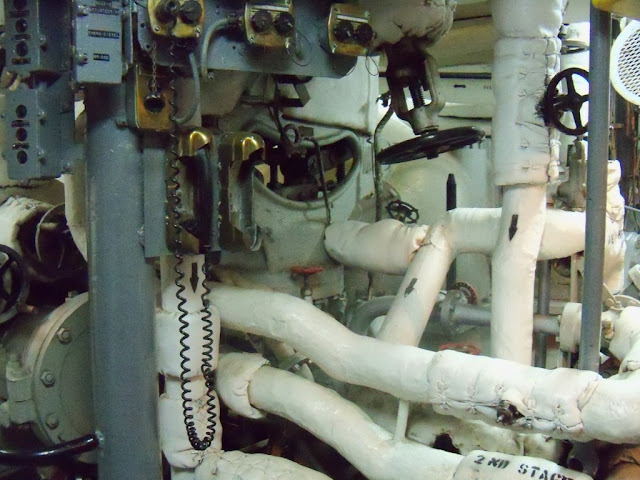Above: The Coast Guard Cutter Taney was built with PWA funds in the mid-1930s. Today, it is a museum ship in Baltimore's Inner Harbor, contributing to the local tourism economy. Photo by Brent McKee.
Above: During World War II, the Taney was fitted with three additional 5-inch guns, anti-aircraft batteries, and depth charges. The Taney saw extensive action in both the Atlantic and Pacific, knocking down several enemy aircraft and earning three battle stars. Photo courtesy of the U.S. Coast Guard.
Above: The Taney also saw action on December 7, 1941, during the Japanese attack on Pearl Harbor. Additionally, during her active duty years the Taney served in Vietnam, seized illegal drugs, participated in search & rescue missions, and performed significant weather research duties. Photo by Brent McKee.
Above: Much of the Taney's interior dates to its original construction, including the engines and engine room - a maze of pipes, wires, and gauges. Photo by Brent McKee.
Above: The Taney served America for half-a-century, commissioned in 1936 and decommissioned in 1986. Today, she is a National Historic Landmark. Photo by Brent McKee.
Above: The first day of work on the Taney, May 1, 1935 - U.S.C.G. Cutter No. 68 (not to be confused with the Taney's hull number "37"). Many people, e.g., U.S. Senator Mitch McConnell, claim that the spending programs of the New Deal did not work. Yet, the workers you see in the photo above were certainly happy to have a job courtesy of PWA funds. And the incredible service of the Taney to her country, and her continued economic contributions to Baltimore's Inner Harbor, also seem to dispute the "New Deal did not work" talking point. And remember, the Taney is just one of thousands of New Deal projects that we still benefit from today. Indeed, you can visit the Living New Deal for over 10,000 other examples. Photo courtesy of Historic Ships in Baltimore.
Sources: (1) Treasury Department Appropriation Bill for 1936, Hearing Before the Subcommittee of House Committee on Appropriation, 74th Congress, First Session, Washington, DC: U.S. Government Printing Office, 1935, p. 434. (2) Federal Works Agency, Millions for Defense, Washington, DC: U.S. Government Printing Office, 1940, p. 41. (3) Historic Ships in Baltimore. (4) Naval History and Heritage Command. (5) U.S. Coast Guard, Historian's Office.






No comments:
Post a Comment